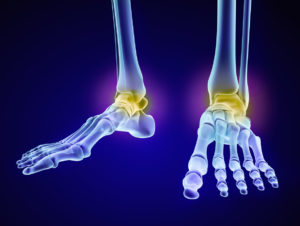Are you missing ankle mobility? Having sufficient range of movement in your ankle is important. If you want to run fast or jump high having good ankle range of movement in dorsiflexion is essential.
This is not just in the sporting environment but simply to walk well we need good ankle mobility. The movement that important is the ability to pull your toes towards you. A lack of dorsiflexion is linked with increased injury risk with achilles tendinopathy and patella tendinopathy having been shown to be impacted by a lack of ankle mobility in dorsiflexion.
Why is it important?
Having a good range of movement in dorsiflexion allows you to have a good strong plantar flexion movement. The strong plantar flexion comes from how the going into dorsiflexion tensions the posterior musculature. It also allows you to apply pressure through the midfoot rather than the back of the foot. This then allows the hamstrings to contract better and creates better force transfer through the leg to the hip. The hip musculature then engages better giving us stronger in hip extension.
This becomes more and more important as you move from walking to jogging to running to jumping.
Good dorsiflexion allows you to simply move better.
More stress is placed on the knee when there is a lack of ankle mobility in dorsiflexion. The lack of dorsiflexion results in the hamstrings and gastroc being to combine to help stabilise the knee. The reult of this is that they are unable to combine to help absorb the landing forces. The quads then have to do more work to pick up the slack meaning that there is more stress of on the patella tendon. Similarly with the achilles tendon. When the knee doesn’t travel over the foot, thus engaging the posterior chain, the achilles ends up absorbing a lot more force than normal.
Where do you feel it?
When you lack dorsiflexion range of movement where you feel the restriction gives a good indication as to where the problem is.
In the front of the ankle
When you feel a block in the front of the ankle as the knee travels forward it suggests that the talus isn’t able to glide posteriorly. The talus sits between the tibia and the calcaneus (your heel) and is required to be able to glide backward and forward to enable the good movement of the tibia.

The reason the talus is unable to glide backward is 9/10 protective tone in either the posterior talotibial or posterior talofibular ligaments. This can be caused by previous ankle sprains or other lower leg injuries that affect gait.
The protective tone often requires some hands-on work to get it to settle down but there are a couple of things you can do to help it at home. The first is the half kneeling ankle mobilisation. This looks like a hip flexor stretch but the focus is the ankle. When you perform it you need to make sure that you are pushing the knee over the middle toes. Allowing it to drift in toward the big toe. takes the stress off the desired area. This then negates the effectiveness of the movement.
The effectiveness of the movement by adding in a resistance band around the ankle. Wrap the band so that it is pulling backward and place the other end around a short piece of wood or mobility “peanut”. Now place the peanut on the other side of a door and pull the door shut towards you. The pressure from the peanut will keep the door shut.
In the back of the calf
If the movement feels limited by tension in the posterior lower leg it is protective tone in soleus or the deep flexors.
In this scenario, it is about finding out why the protective tone is there. This requires a little bit more investigation, looking up the chain at the hip as well as around the ankle. With all leg issues, there is never just one area involved. The problem with the tone may be coming from the hip where the glutes may be involved. It may be around the knee where the hamstrings aren’t combining with the gastroc to create good posterior knee stability. There can be a number of reasons for this type of tone and sometimes it is down to simply too much work.
You can do some pre-emtive work to help avoid this protective tone from developing. We use this drill in the video below in our regularly in our rehab. It is a great way to help develop good control at the hip in all planes of movement. It also has a side benefit of strengthening soleus. We use a furniture slider that you can pick up for a couple of quid from amazon, a piece of cardboard will work too.
If you would like to have a chat about any ankle problems you may have or how adjust your training in relation to it, you can arrange a free phone call. or click here if you’d like to enquire about an appointment.

